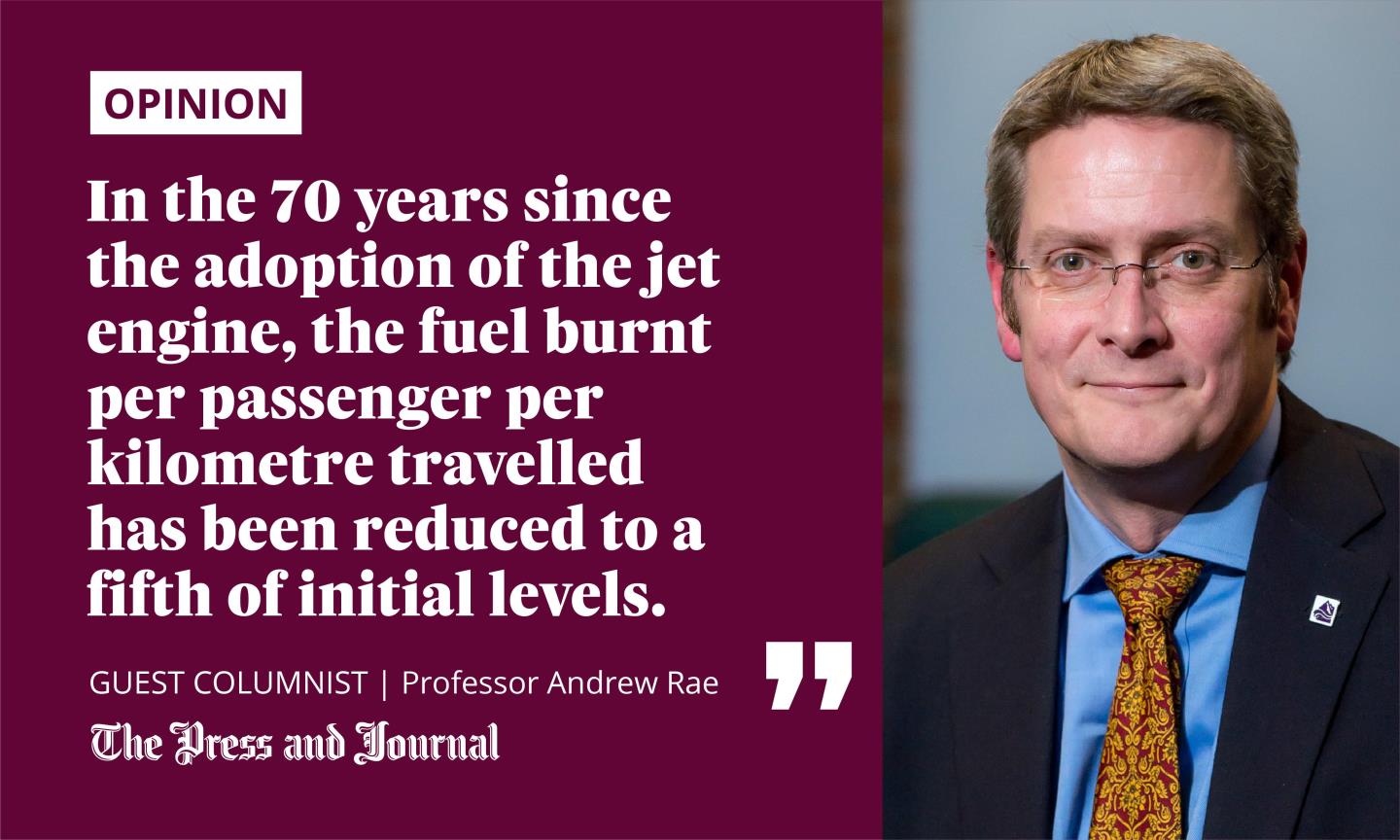What does the future hold for those of us contemplating driving (or sailing, or flying) home for Christmas? Is the future of transport a “Road to Hell” or is there a “Light of Hope”? (Thank you, Chris Rea.)
Transport is most definitely, and quite rightly, in the spotlight at the moment, and aviation, especially, is receiving attention. It is obvious that the way we fly needs to change and that doing nothing is unacceptable. Consequently, the industry is experiencing what is being called the “third revolution”, following the birth of powered flight and the invention of the jet engine.
Having spent much of my career wondering what it would have been like to work in the industry in the vibrant post-war era, I now find myself involved in the equally challenging drive to eliminate carbon from air travel.

In the 70 years since the adoption of the jet engine, the fuel burnt per passenger per kilometre travelled has been reduced to a fifth of initial levels. It is true that many of the technological advances that underpinned this increase in efficiency have been made to reduce costs rather than save the planet. However, an analogy can be made with the current climate change imperatives and the efforts of the aviation industry to reduce aircraft noise.
Increasingly stringent regulations have meant that the perceived level of noise generated by modern airliners is over 100 times lower than their ancestors. We must now use a similar application of carrot and stick to achieve zero carbon aviation through the use of renewable energy to supply electricity, hydrogen and sustainable fuels.
There’s no layby in the sky
The Highlands and Islands is home to many of the transport initiatives aimed at fighting climate change. UHI is involved in the maritime use of hydrogen and in the automotive use of batteries, and it is cross-sectoral collaboration that will enable practical applications by addressing the twin requirements of safety and affordability, both of which come from the reliability and volume established from widespread use in less demanding environments. As the truism goes, there’s no layby in the sky.
HIAL has embarked on a £3.7 million project to develop a sustainable aviation programme that could transform short flight travel between remote communities.
Read more about the #SATE project here: https://t.co/8VaLjyY9zU #FutureFlightChallenge @UKRI_News pic.twitter.com/lLdaOmHpIU
— Highlands & Islands Airports (@Hial_Airports) January 20, 2021
The work led by Highlands and Islands Airports Limited (with funding assistance from the UK Government’s Future Flight Challenge programme) to create a Sustainable Aviation Test Environment centred at Kirkwall Airport is establishing a breeding ground for these new technologies. It has encompassed my own work with US-based company Ampaire – that saw the first flights in the UK of a hybrid battery-electric aeroplane on representative airline routes – and the deployment of Windracers’ large uncrewed aerial vehicle, capable of carrying a payload of up to 100kg over a distance of 1,000km, on deliveries for Royal Mail.
When Windracers’ aeroplane was first described to me I formed a mental picture of something like Thunderbird 2, so it was with some disappointment that I found out that it wasn’t even painted green.
No silver bullet for aviation industry’s environmental impact
There is no silver bullet to remove the environmental impact of aviation overnight. But our imperatives have changed; our focus now is to combat climate change and not to make more money for somebody else.
The use of electric motors, large batteries and hydrogen all have consequences and, as someone supposedly Scottish said: “Ye cannae change the laws of physics”.
The debate about solutions must be based on fact rather invective
Aside from the technology, there are other challenges that need to be addressed before we achieve our ambitions. If electricity and hydrogen are to be used at the scale required by mass transport, there will need to be massive changes to the national generation and distribution infrastructure. If airlines and airports are to invest heavily in alternative fuels, they will need to be incentivised to do so.
Importantly, though, the debate about solutions must be based on fact rather invective. As Andrew Lang lamented, politicians use statistics in the same way that a drunk uses lamp posts; for support rather than illumination.
We have a journey to go on to find solutions
There are others on the move over Christmas who also haven’t had their transport credentials examined credibly. A certain scarlet-clad resident of the North Pole has to visit an estimated 200 million children on the planet, though that number has not been verified against this year’s naughty list.
That suggests that his sleigh would need to have the thrust equivalent to several million Saturn V moon rockets to overcome the air resistance. Even if this were possible, it would take more than a copious beard to protect his face from a rather severe (and probably terminal) chafing. No wonder Rudolph has a red nose.
Transport in general, and aviation in particular, faces a series of knotty challenges if it is to meet the goals required, but the first steps have been taken, and the journey promises to be both intellectually stimulating and emotionally rewarding.
Now, if only I had some spare dilithium crystals or a hyperdrive motivator lying around. Dear Santa…
Andrew Rae is a professor of engineering at the University of the Highlands and Islands (UHI)

